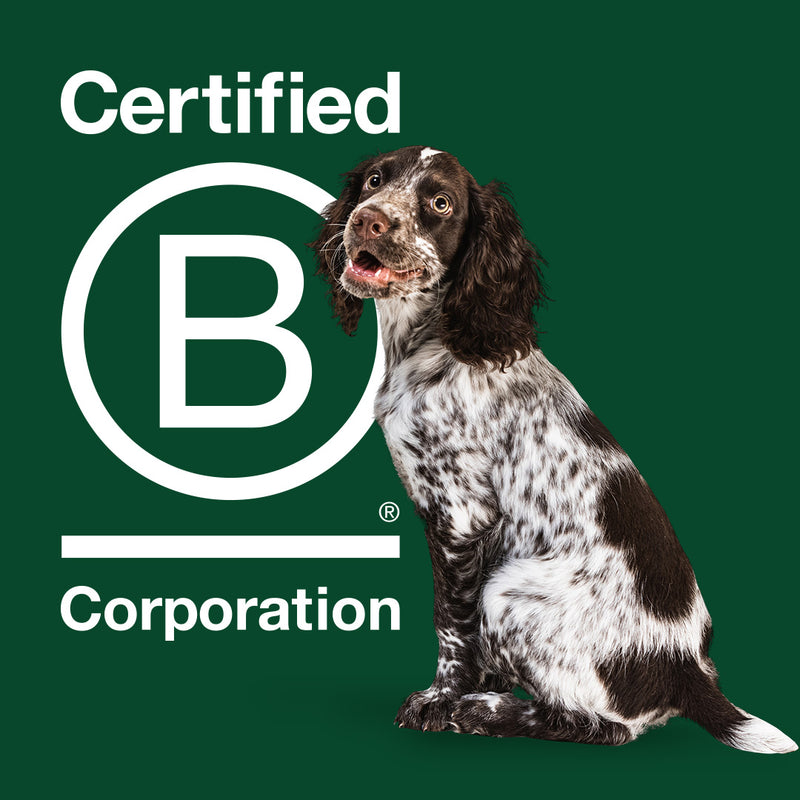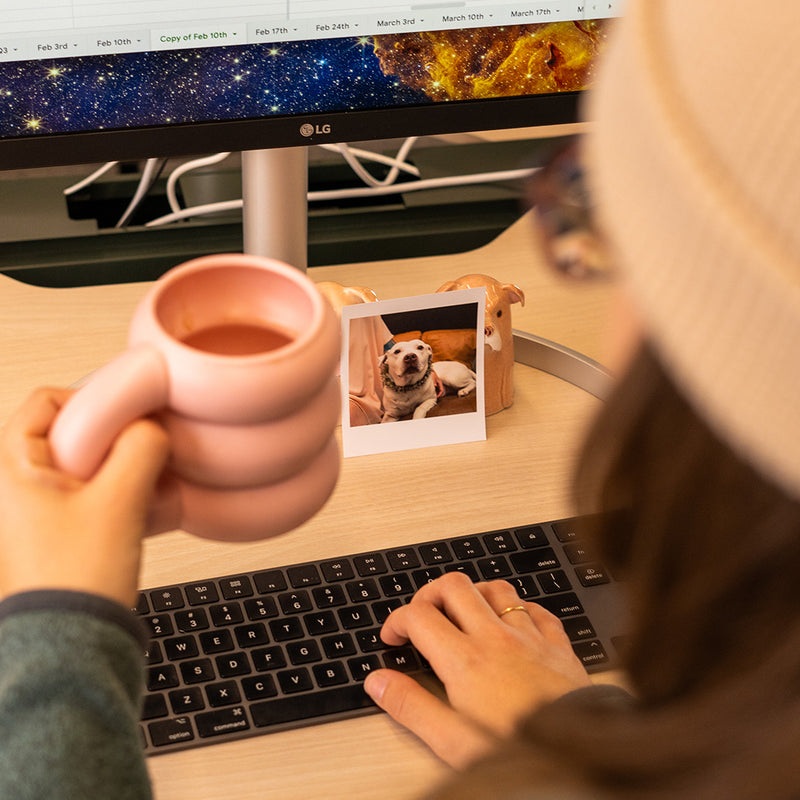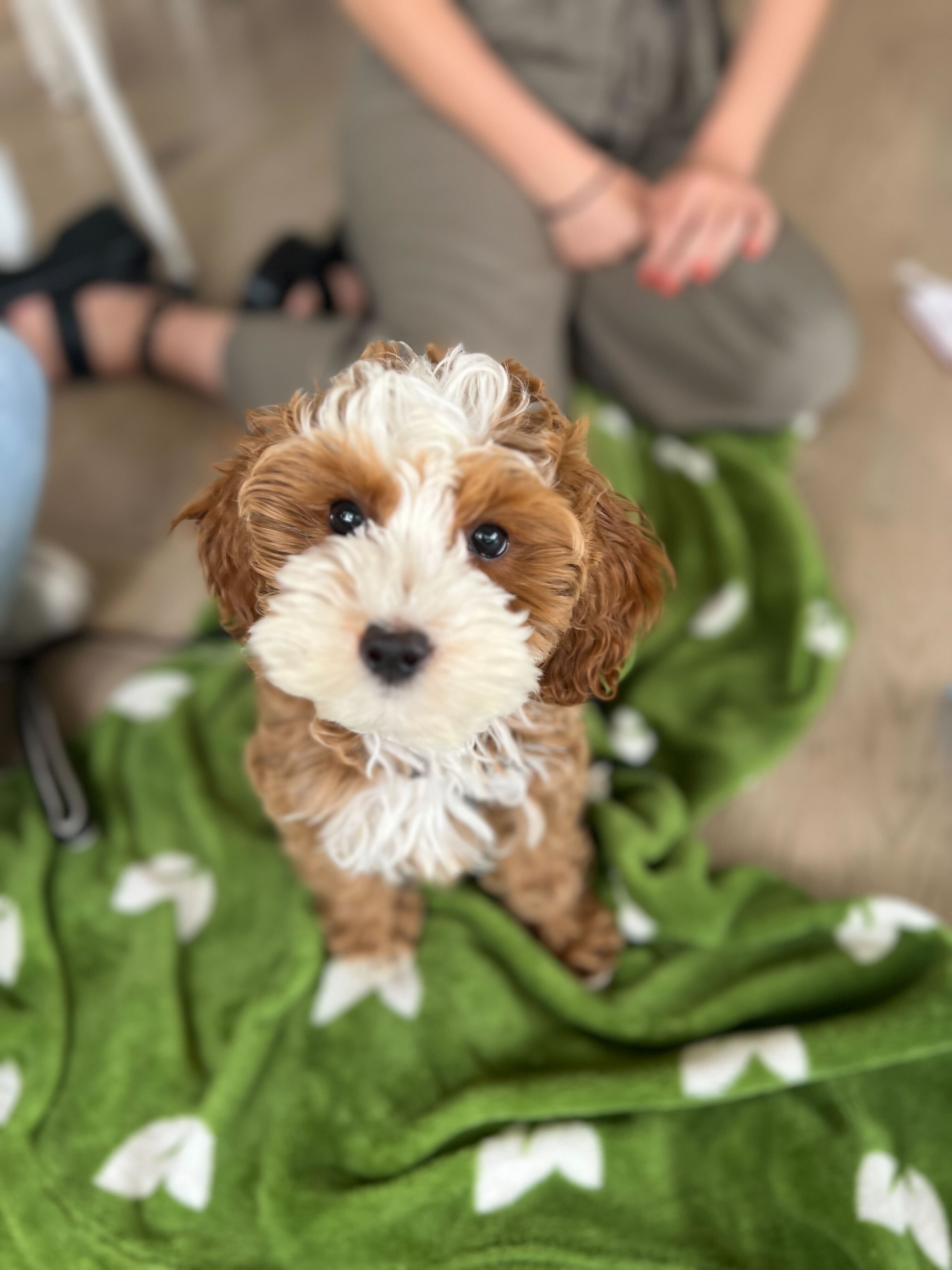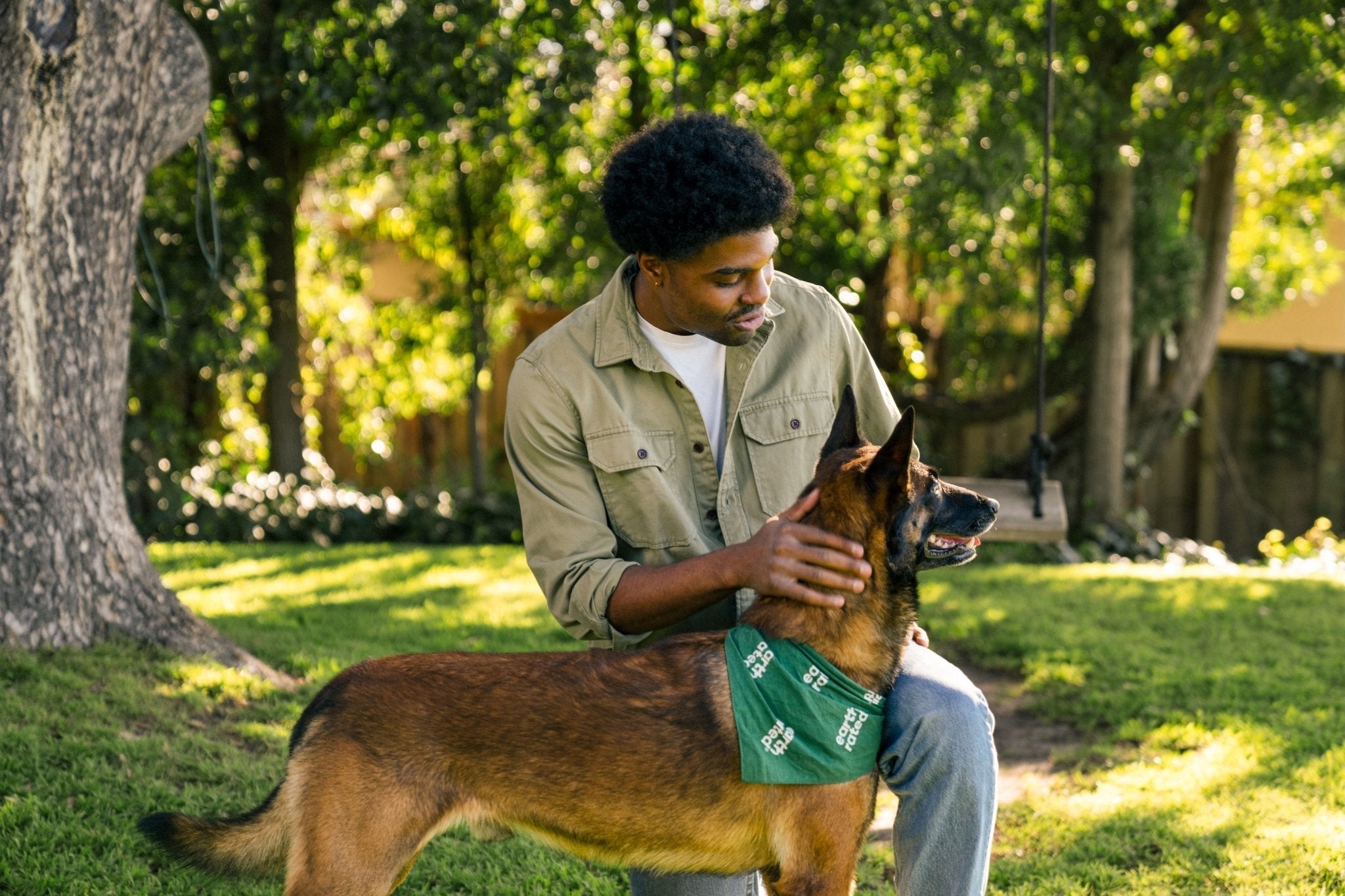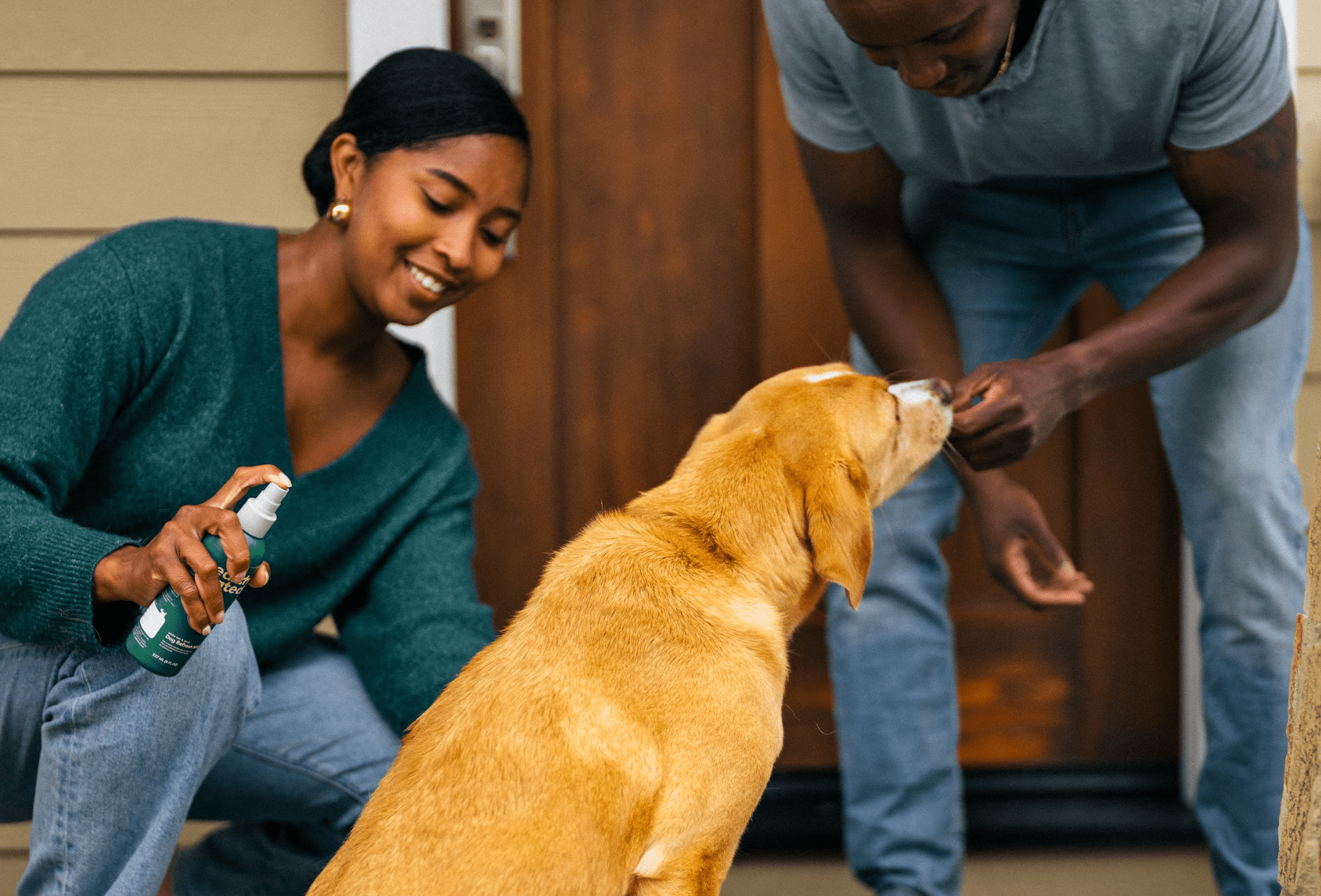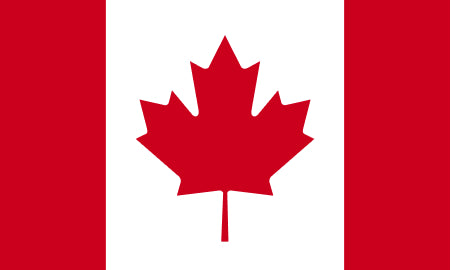Potty training a puppy can feel like a daunting task, but don’t worry – we’ve got your back! Establishing a reliable potty training schedule is key to transforming your adorable ball of fluff into a well-trained, house-friendly companion.
Puppy potty training can definitely come with a set of challenges. Between the excitement of having a new puppy to the inevitable accidents, it can all be a bit overwhelming. The good news is that with a consistent schedule and a positive approach, you’ll soon see your puppy make leaps and bounds towards their potty training success story!
Here at Earth Rated, we’re all about making life with dogs simpler and better (and cleaner, of course!) So, with these practical tips, expert advice, and our most recommended products, you'll soon be well-equipped to handle any potty training hiccup that comes your way. Now, let’s dive in and get your puppy on the path to potty training victory!
Understanding Your Puppy’s Needs
Before we jump into the nitty-gritty of potty training, it's important to first understand typical puppy behavior. Puppies have unique biological and behavioral needs that influence their potty habits. Knowing these can make the training process smoother and more effective!
Biological Factors
Puppies have smaller bladders and digestive systems, which can sometimes mean they need to go potty more frequently than adult dogs. Typically, a puppy can hold their bladder for about one hour per month of age. So, a two-month-old puppy might need a potty break every two hours. Don’t worry, this frequency will typically decrease as they grow older, and their bladder control improves.
Behavioral Factors
Just like us, puppies have certain behaviors that signal when they need to go potty. Here are a few signs to watch for:
- Sniffing around the floor
- Circling or pacing
- Whining or barking
- Suddenly stopping play or other activities
Basic Principles of Potty Training
Now that we've got a handle on your puppy's needs, let's get into the basic principles of potty training. These tried-and-true methods will set you and your puppy up for success, making the whole process smoother and more enjoyable for everyone involved.
Do's of Potty Training
- Consistency is Your Best Friend: Take your puppy out to the same spot every day. The familiar scent should encourage them to go potty in the designated area more consistently.
- Stick to a Schedule: Establish a regular routine. Take your puppy out first thing in the morning, after meals, during playtime, and before bedtime. The more predictable the schedule, the quicker your puppy will learn!
- Praise and Rewards: Celebrate when your puppy does their business outside! Use treats, praise, or a favorite toy as a reward. You’ll learn that positive reinforcement can often make a big difference.
- Supervise: Keep an eye on your puppy when they’re indoors. This helps you catch the signs that they need to go out and prevents accidents.
Don’ts of Potty Training
- Don’t Punish: Accidents will happen. Never punish your puppy for going potty inside.
- Avoid Unclear Commands: Stick to simple, consistent commands like “go pee pee.”
- Don’t Rush: Potty training takes time. Be patient and give your puppy the time they need to understand what’s expected of them.
Essential Tools for Potty Training
- Pee Pee Pads: These are great for training and for times when you can’t get your puppy outside quickly enough.
- Earth Rated Poop Bags: Keep clean-up easy with our #1 best selling poop bags. They’re strong, reliable, and help make those inevitable messes just a bit more manageable.
- Crate: A crate can prove invaluable for potty training. Just ensure it's the right size—big enough for your puppy to stand and turn around but not too big to prevent them from using one corner as a potty spot.
Creating a Potty Training Schedule
As mentioned earlier, crafting a reliable potty training schedule is crucial for your puppy’s success. A consistent routine helps your puppy understand when and where they should go, making the process easier for both of you. Here’s a step-by-step guide to developing an effective potty training schedule.
Morning Routine
- First Thing in the Morning: Take your puppy outside as soon as they wake up. Puppies often need to go potty right after waking up.
- Breakfast Break: After your puppy eats breakfast, take them outside again. Eating stimulates their digestive system, so they’ll likely need to go soon after eating.
Daytime Routine
- Frequent Potty Breaks: Take your puppy out every 1-2 hours during the day. Puppies have small bladders, after all, and as such, they may need frequent breaks.
- After Playtime: Physical activity can also stimulate the need to go potty. Take your puppy outside after each play session.
- Nap Time: Puppies often need to go potty after a nap. Take them outside as soon as they wake up.
Evening Routine
- Dinner Break: Just like with breakfast, take your puppy outside after their evening meal.
- Before Bedtime: Ensure your puppy has one last potty break before settling down for the night. This helps reduce overnight accidents.
Nighttime Routine
- Overnight Potty Breaks: For very young puppies, some dog owners may wish to play it safe and set an alarm to take them out once or twice during the night. As puppies grow older, they’ll be able to hold it longer, reducing the need for nighttime breaks.
Sample Potty Training Schedule
- 6:00 AM: Wake up and take outside
- 6:30 AM: Breakfast, followed by a potty break
- 8:30 AM: Potty break
- 10:30 AM: Potty break
- 12:30 PM: Lunch, followed by a potty break
- 2:30 PM: Potty break
- 4:30 PM: Potty break
- 6:30 PM: Dinner, followed by a potty break
- 8:30 PM: Potty break
- 10:00 PM: Final potty break before bed
- Overnight (optional): Potty break every 3-4 hours (for young puppies)

Handling Setbacks and Accidents
Even with the best potty training schedule, accidents are bound to happen. It’s all part of the process! The key is to handle setbacks constructively and keep moving forward. Here are some tips to help you manage accidents and stay on track with your puppy’s potty training:
Stay Calm and Patient
Accidents can be frustrating, but it’s important to stay calm. Remember, your puppy is still learning. Raising your voice or punishing your puppy can create fear and anxiety, which might make the problem worse. Instead, take a deep breath and clean up the mess without making a big fuss.
Clean Accidents Thoroughly
Puppies are more likely to go potty in the same spot if they can still smell it. Use an enzymatic cleaner designed for pet messes to eliminate odors completely.
Adjust your Schedule as Needed
If accidents are happening frequently, it might be time to adjust your potty training schedule. Puppies grow and their needs change, so you may need to take them out more often than initially planned.
Positive Reinforcement for Success
When your puppy goes potty outside, make sure to praise and reward them immediately. Use treats, affection, or a favorite toy to show them that they’ve done a great job. Positive reinforcement helps your puppy understand what’s expected of them and encourages them to repeat the behavior.
Monitor Diet and Water Intake
Sometimes, what your puppy eats and drinks can affect their potty habits. Ensure they’re on a healthy, balanced diet and monitor their water intake. Too much water before bedtime can lead to overnight accidents. Try to regulate their drinking schedule to match potty breaks.
Keep a Potty Journal
Keeping a potty journal can help you track patterns and identify any issues. Note the times your puppy goes potty, both inside and outside. This can help you adjust your schedule and understand your puppy’s needs better.
Consult a Professional
If you’re struggling with potty training despite your best efforts, don’t hesitate to consult a professional. A certified trainer or animal behaviorist can offer personalized advice and strategies to help you and your puppy succeed!
Advanced Potty Training Tips and Tricks
Once you’ve got the basics down, you might find yourself facing some advanced potty training challenges. Don’t worry, we’ve gathered some expert tips to help you navigate these trickier aspects of potty training.
Expert Insights: Isa-May Pellerin, Certified Animal Health Technician
1. What are common mistakes owners make during the early stages of potty training?
“Your puppy is NEVER DOING IT ON PURPOSE! Puppies have very small bladders and can only hold it for so long. I am taking my 10-week-old puppy out every hour during the day and every 4 hours overnight. It’s like a baby!”
2. How can a puppy's diet influence their potty habits?
“A healthy, balanced diet will produce firm, regular stools that are easier to “retain”. Parasites (more frequent than you think in puppies), inappropriate or low-quality diet can cause loose stools or diarrhea, which are harder to hold in.”
3. What are some signs that a potty training method isn’t suitable for a specific puppy?
“It is never recommended to reprimand a puppy or “rub its nose in it”. This only makes the puppy fear the owner and possibly go potty inside still, but only out of sight. A regular schedule for potty breaks and meals, as well as positive reinforcement whenever the puppy potties outside is the best way to go.”
4. How do different breeds respond to various potty training techniques?
“Small breed puppies have tiny bladders and can only hold so much urine, so some people prefer to potty train them on pee pads. Small, hairless or short coated breeds tend to be cold - if they need to go outside, sometimes a jacket is needed to keep them comfortable while they find where to go potty.”
You’ve got this!
Potty training can be a challenging journey, but with consistency, patience, and a positive attitude, you and your puppy will make great progress together.
Here’s a quick recap of everything we covered:
- Understand Your Puppy’s Needs: Recognize the biological and behavioral factors that affect your puppy’s potty habits. Watch for signs that they need to go and take them out frequently.
- Stick to the Basics: Follow the do’s and don’ts of potty training. Use a consistent schedule, positive reinforcement, and the right tools like potty pads and our very own Earth Rated poop bags.
- Create a Schedule: Develop a daily routine that includes morning, daytime, evening, and nighttime potty breaks. Adjust the schedule as your puppy grows.
- Handle Setbacks with Grace: Stay calm and patient when accidents happen. Clean thoroughly, adjust the schedule, and continue to reinforce positive behavior.
- Advanced Tips: Learn from expert advice to tackle more challenging aspects of potty training. Be aware of diet impacts, breed-specific needs, and effective training methods.
If you found these tips helpful, consider signing up for our newsletter. You’ll get the scoop on the latest Earth Rated dog toys, poop bags, wipes, and more. Plus, exclusive deals & contests straight to your inbox!



